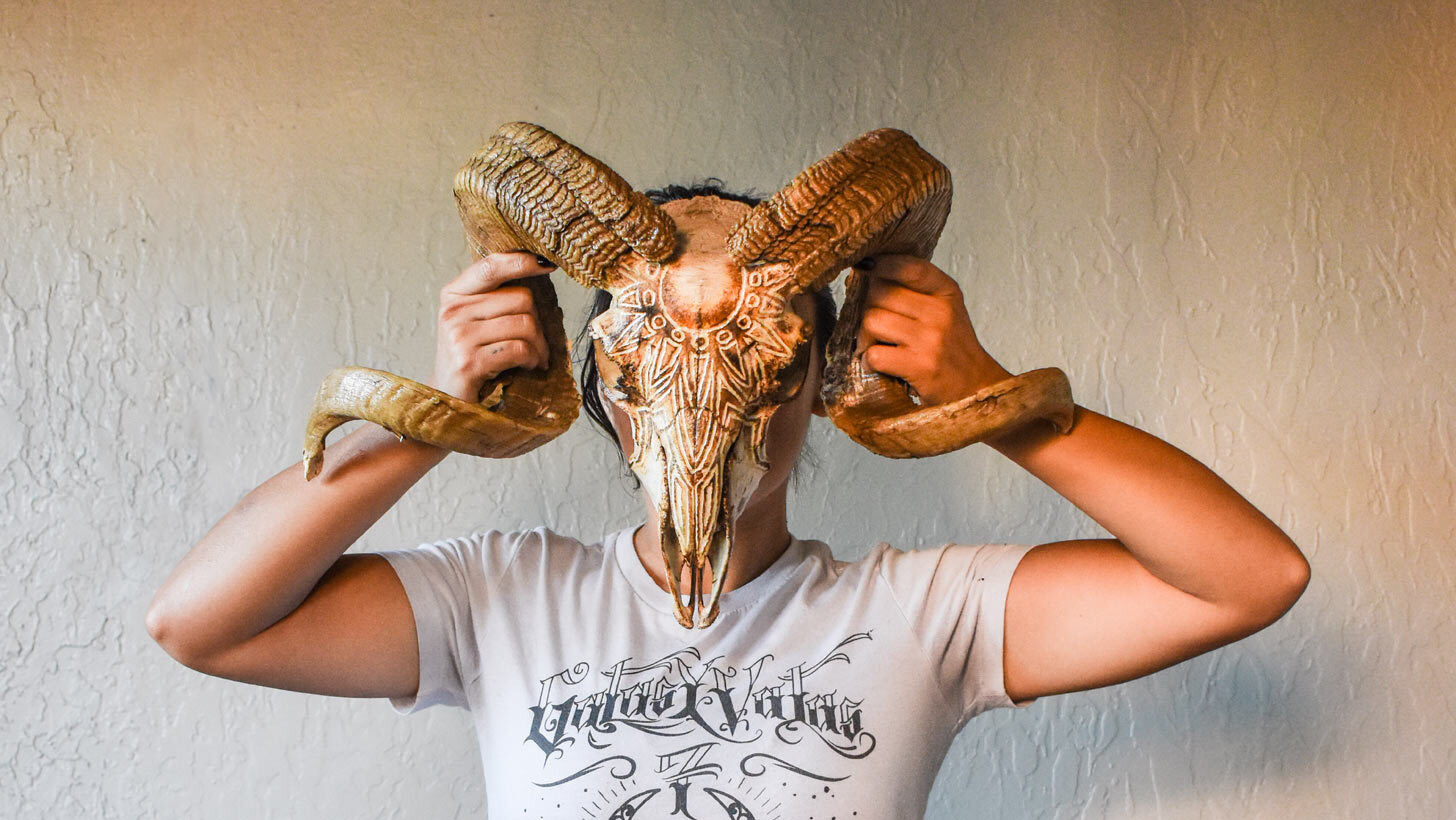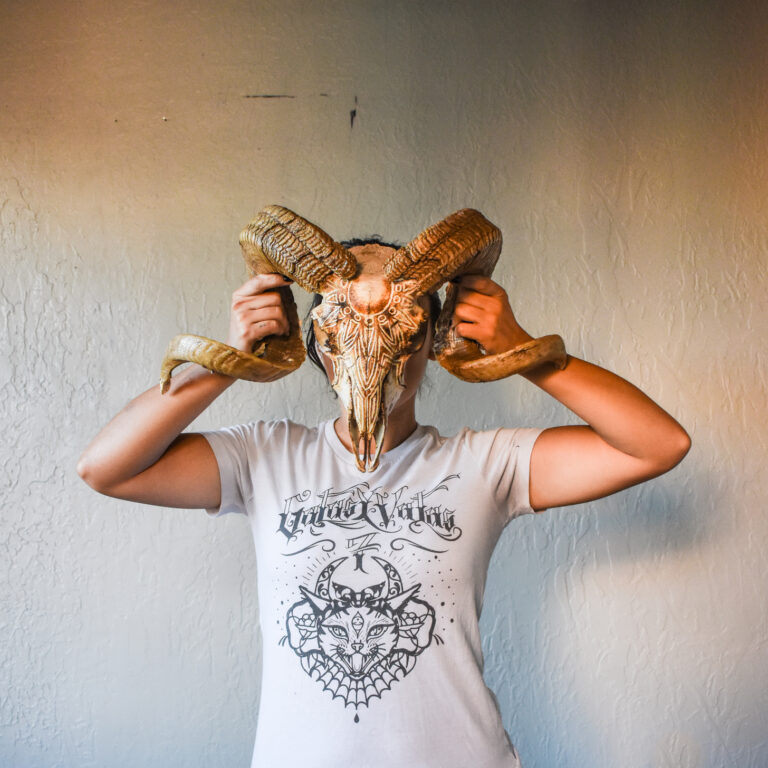Good Grief
Exhibition OpeningFriday, Oct. 4, 6pm to 10pmFourteenfifteen Gallery1415 Fourth Street SWBones Of Grief: The Scrimshaw Of Adri De La Cruz
The Scrimshaw Of Adri De La Cruz


Adri De La Cruz in her studio
Clarke Condé








